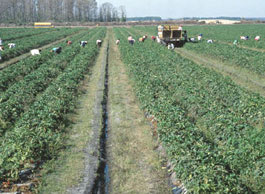For years, our society has witnessed the great developments in technology that has immensely improved our lives in numerous ways. Technology advances has significantly benefited our world, from entertainment, to everyday convenience and efficiency, to agriculture, and most importantly, in the medical field. Nowadays, doctors and researchers have the ability to view and understand our internal body systems. Not to mention, detect and control diseases, as well as develop a variety of medication and find appropriate cures for these diseases.

Cancer has been around for as long as human kind has. Some of the earliest evidence of cancer has been found in fossilized bone tumours, ancient manuscripts, and the Egyptian mummies. The oldest description of cancer was discovered in Egypt and dates back to about 1600 B.C., which described cases of tumours, or ulcers of the breast, that were treated by cauterization using the tool “fire drill”. It was also recorded that there was no treatment for the disease. However, to better understand cancer, autopsies were performed in 1628 by Harvey. A century later, anaesthesia allowed surgery to flourish and cancer operations such as radical mastectomy was developed. The 19th century saw the use of modern microscope in studying diseased tissues which allowed understanding of cancer’s damage and later helped with the development of cancer surgery. The 20th and 21st century saw the greatest progression in cancer research. During these centuries, a variety of cancer treatments including surgery, hormone therapy, radiation, chemotherapy, immunotherapy, and targeted therapy were developed. Technology involving cancer screenings as well as, early detection and prevention of cancer were also developed.


One of the greatest technological advancements in medical history is the development of Magnetic Resonance Imaging (MRI), which not only screens and detects cancer, but also allows doctors to diagnose multiple sclerosis, brain tumours, torn ligaments, tendonitis, and various other health issues. MRI is an imaging technique which uses a magnetic field and radio waves to produce high quality images of the inside of the human body. In 1977, physician and scientist, Dr. Raymond Damadien produced the first MRI machine. It has certainly revolutionized medicine since it is known to be non-invasive, which means it does not require skin incision, insertion of any instruments, or medical, while allowing doctors to view diseases that, in the past, could only be found at surgery or autopsy.

It is evident that technology has played a vital role in the medical field. Technological advancements, such as the MRI has improved society’s way of life. We are now given access to the appropriate treatment that needed in a more efficient way, without having to undergo greater pain. It has, more importantly, saved the lives of many. There is no surprise that medical advancements are still develop, with hopes to rid of all diseases in the present, as well prevent those in the future.
WORKS CITED LIST
"Learn About Cancer." American Cancer Society. N.p., n.d. Web. 9 May 2011.
"How MRI Works." Discover: Fit & Health. Discovery Communications, LLC, n.d. Web. 9 May 2011http://health.howstuffworks.com/medicine/tests-treatment/mri.htm "MRI of the Body." Radiologyinfo.org: The Radiology Information Resource for Patients. Radiological Society of North America, Inc. (RSNA), n.d. Web. 9 May 2011. http://www.radiologyinfo.org/en/info.cfm?pg=bodymr "Magnetic Resonance Imaging (MRI Scan)." MedecineNet.com. MedicineNet, Inc., n.d. Web. 9 May 2011. http://www.medicinenet.com/mri_scan/article.htm"Magnetic Resonance Imaging (MR or MR)." Children's Hospital Boston. N.p., n.d. Web. 9 May 2011.http://www.childrenshospital.org/clinicalservices/Site2131/mainpageS2131P9.html Michelle Seguin
Claudia Luk




